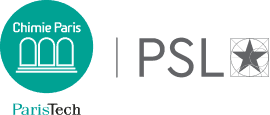
Phonon mediated superconductivity in complex oxides, By Julien Varignon, Laboratoire CRISMAT, CNRS UMR 6508, ENSICAEN, Caen.
Several oxides deriving from a Ruddlesden-Popper (RP) phase with the chemical formula An+1BnO3n+1 such as bismuthates BaBiO3 [1] and antimonates BaSbO3 [2] (n=∞), infinite layered nickelates R1-xAxNiO2 [3] (n=∞, R=La, Pr or Nd, A=Ca or Sr) and Nd6Ni5O12 [4] (n=5), obtained after a chemical reduction of a parent RP phase, or ruthenates Sr2RuO4 [5] (n=1) are superconductors either in bulk or once appropriately doped with holes or electrons. However, the attractive interaction responsible of the Cooper pair formation at the core of superconductivity in these complex oxides is not yet fully understood and unified between compounds, thereby hindering the identification of high critical temperature Tc superconductors whose record at ambient conditions is still held by cuprates.
Using first-principles simulations performed with parameter free density functional theory (DFT), we reveal the existence of an insulating phase in the phase diagram in several of these complex oxides that is associated with a charge/orbital and bond ordered state. The electron-phonon coupling is then weakened by doping effects (or by other stimuli) so that the materials become metallic. Nevertheless, we find that it remains sufficiently large to mediate the Cooper pairs formation with computed Tc’s in sharp agreement with experiments. These results suggest that the phonons responsible of insulating phases in complex oxides [6] may also be at the core of their superconducting state. Finally, these results are ratified if all relevant degrees of freedom, such as structural lowering events and local spin formation, as well as an exchange-correlation functional sufficiently amending self-interaction errors inherent to practiced DFT are involved in the simulations.
References:
[1] Sleight, Physica C 514, 152 (2015).
[2] Kim et al, Nat. Mater. 21, 627 (2022).
[3] Li et al, Nature 572, 624 (2019).
[4] Pan et al, Nat. Mater. 21, 160 (2022).
[5] Maeno et al, Nature 372, 532 (1994).
[6] Varignon et al, Nat. Comm. 10, 1658 (2019).
Zoom link: https://espci.zoom.us/j/89535002474?pwd=tw5aPhqOQdoLLNG1hMK7KXBjBbaalR.1
ID:895 3500 2474
Passcode:Pitaevskii
